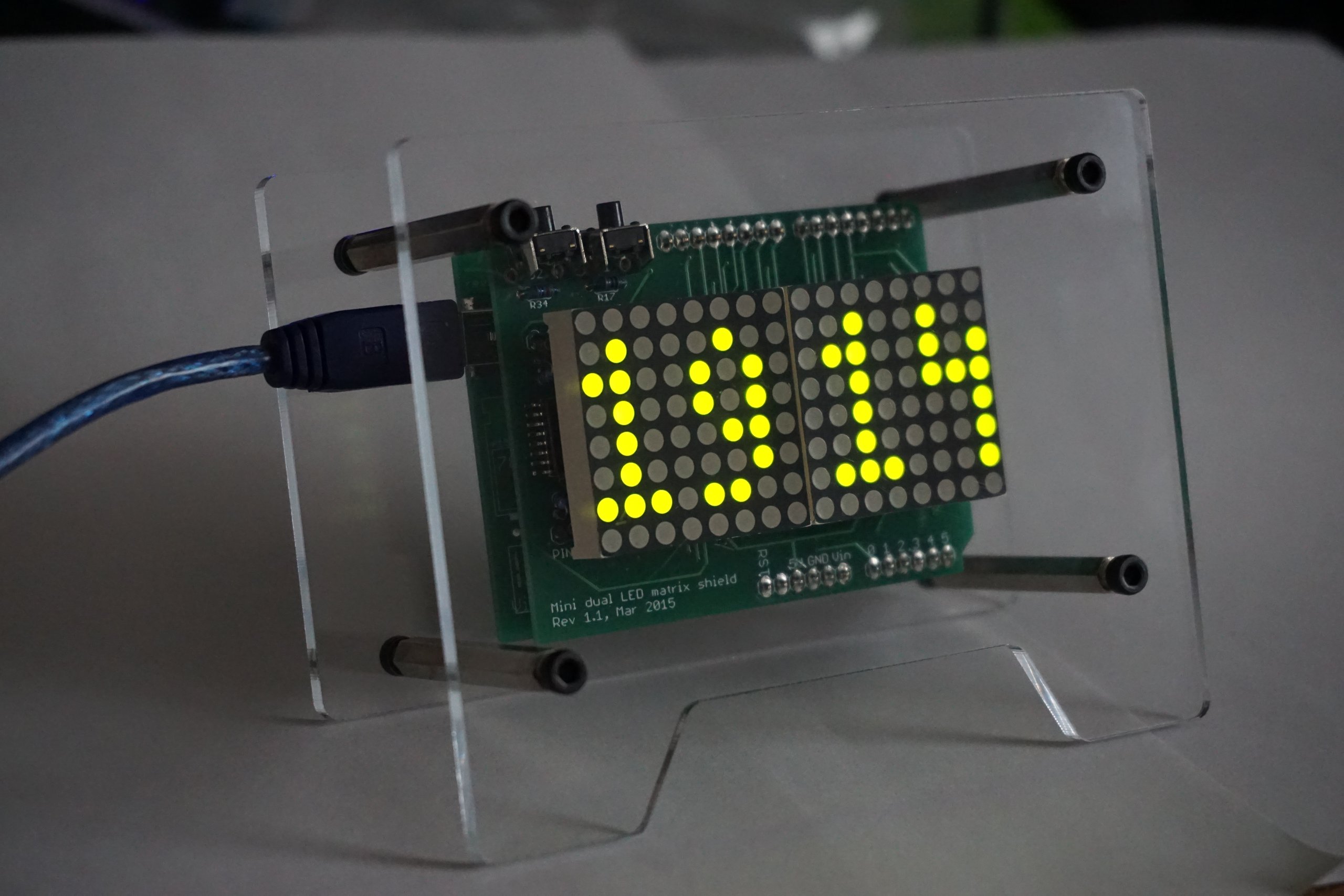
a bunch of wires, resistors and capacitors LED drivers: either a) 3 TLC5940 (or similar) or b) 6 74HC595 shift registers with 45 220 Ohm resistors 15 RGB thru-hole LEDs, preferably bigger ones (8mm in my case) The last step shows some totally different clocks you may program on this device.

#ARDUINO LED CLOCK HOW TO#
These next steps will deal with the hardware options you should consider for this project, namely, how to drive 15 RGB LEDs, as well as contain some practical advices that may be useful. No particular schematics or ready sketches will be present in next steps due to the fact that my clock was made of customized PCB using a not-exactly-everywhere available LED drivers.

This concludes the introduction grab your soldering iron and go make it. The colors of hours and minutes combine, thus at 6:00 and 12:00 no LEDs are turned on, and at 5:30 (11:30) all the LEDs show white, which is red, green and blue all on. In the third quarter green pixels are turned off, and in the last quarter of an hour blue pixels turn off one by one. In the second quarter blue pixels turn on the same way. In the first quarter of an hour green lights turn on one by one, filling the clock face from left-upper corner to right-lower. The minutes are displayed by pixel in three 5-pixel long lines. If none is on it’s 6 or 12 o’clock, all five on means 5 or 11 o’clock. The hours are displayed in three-pixel vertical red bars. I did this approximation for a different project where it was strictly necessary and found that you can easily discern between, say, 2:30 and 8:30 unless, of course, you suddenly wake up from an alcohol-induced sleep not knowing whether it’s evening or morning. Similar approximation is made in a regular clock face, as there are 24 hours in the day, but only 12 are usually numbered. By ‘dissecting’ the color combination you see on the RGB clock into its three basic colors you can easily tell the exact time.Ī small approximation is made: the ‘clock face’ of the RGB clock consists only of six hours, so 12:00 and 6:00 look the same.

Red shows hours, green and blue show minutes. This way it is always possible to see which of the basic colors are currently on – like red and green in yellow.Įach of three basic colors is used to display its own part. With RGB clock, however, only ‘pure’ basic colors are combined, thus limiting the resulting number of colors to 8: red, green, blue, yellow, cyan, magenta, white and ‘black’. This model uses three ‘basic’ colors, namely red, green and blue, to build any other ‘composite’ color of the spectrum. The RGB clock utilizes the RGB color composition model used in all color displays.


 0 kommentar(er)
0 kommentar(er)
